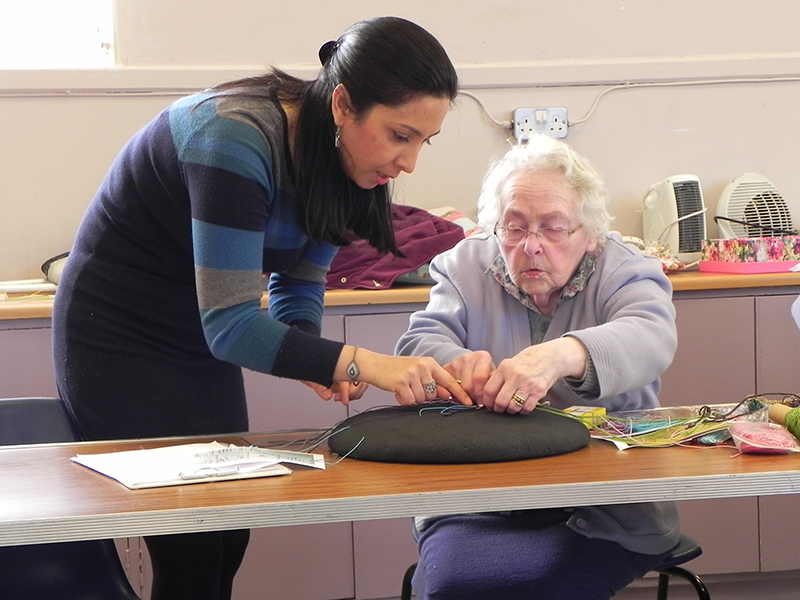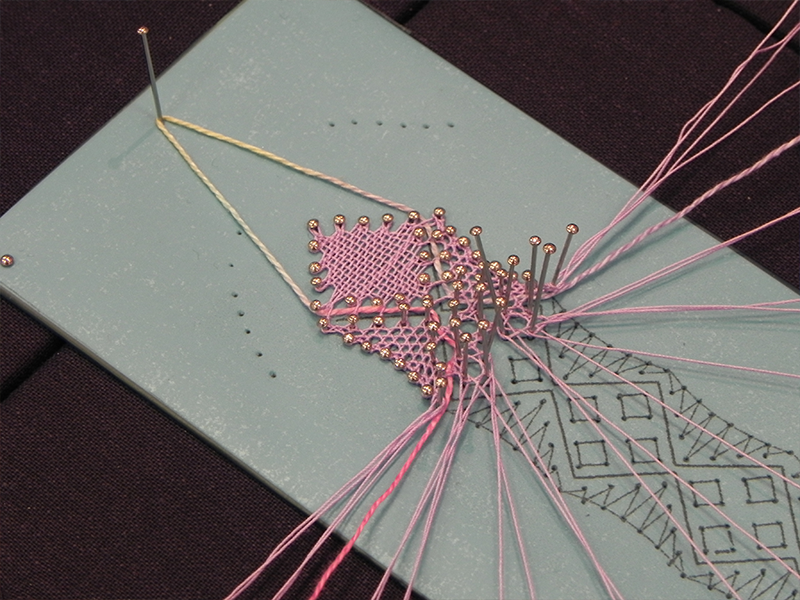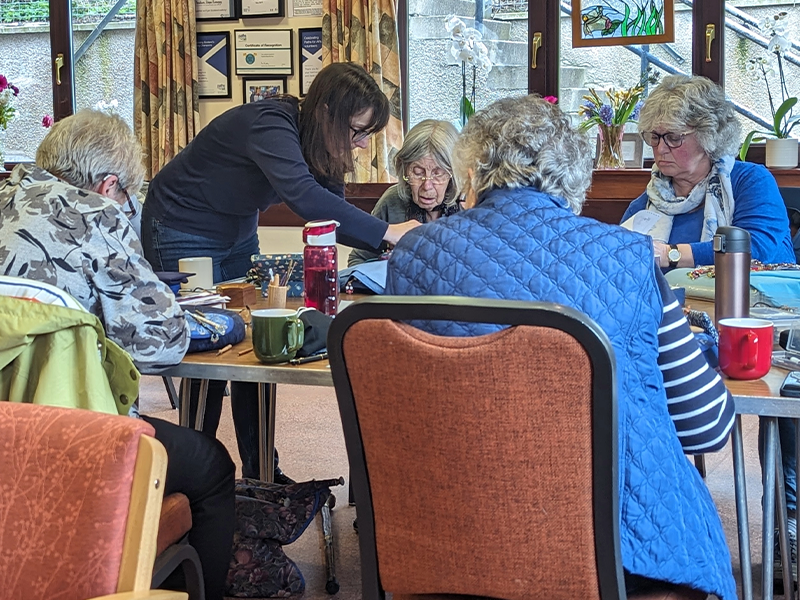Learn lace making
The term “Lace” covers a variety of ornamental openwork fabrics formed by the looping, plaiting, twisting or knotting of threads of flax, silk, gold, silver, cotton either by hand or machine. – Pat Earnshaw, The Identification of Lace
The making of bobbin lace dates from the early 17th century and was made mainly in northern Europe, Flanders in particular, before being imported to England by the French lacemakers when they fled from France in the face of Louis X1V’s persecution of the Huguenots.
Most bobbin lace is characterised by the combination of specific stitches within a pattern known as “ground”. Ground stitches vary depending on the type of lace.
Most people learn to make lace from an experienced lacemaker or teacher.
Bon Accord Bobbins is primarily a self-help group. However, we also provide beginners with a 10-week course of tuition at a rate of £2.00 per week, totaling £20.00 for the entire course. This fee is reinvested back into the group to support our ongoing teaching activities.
A £20.00 deposit is required for the initial equipment set and will be refunded upon return if not purchased.




